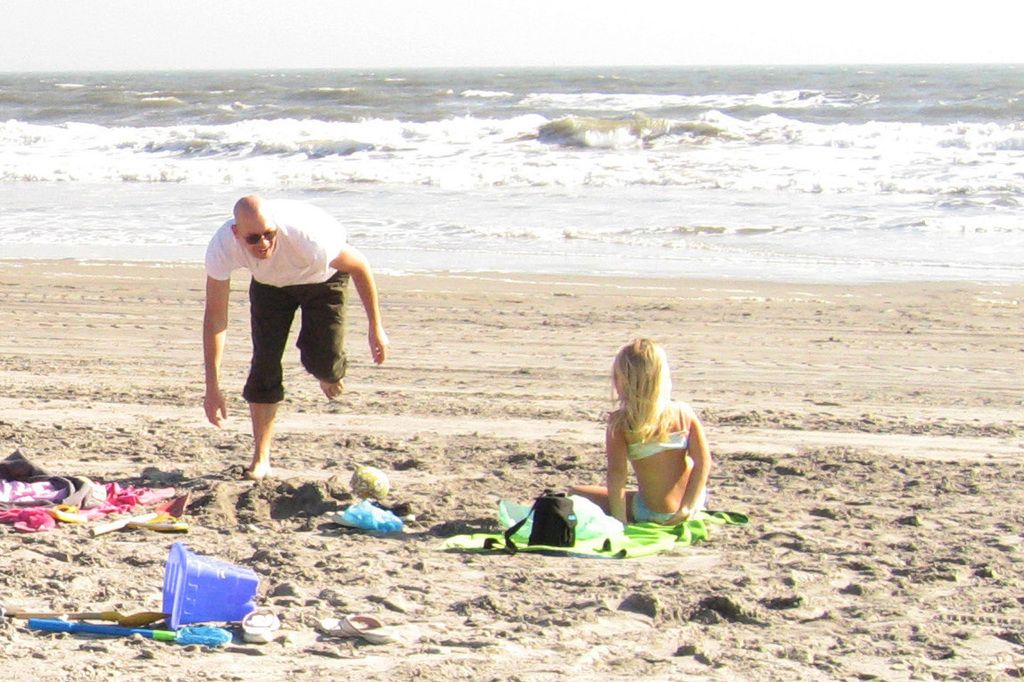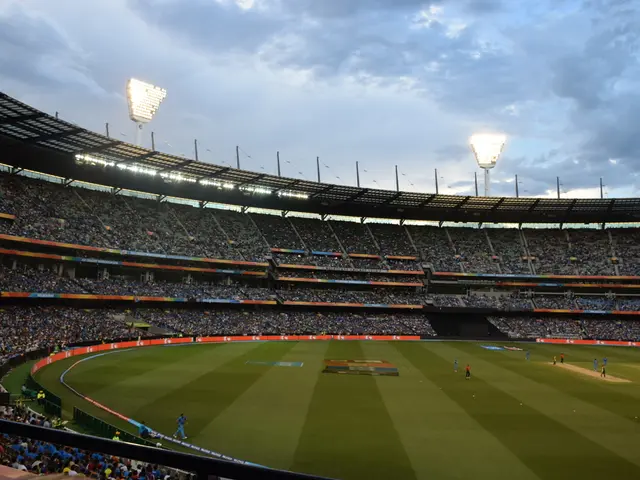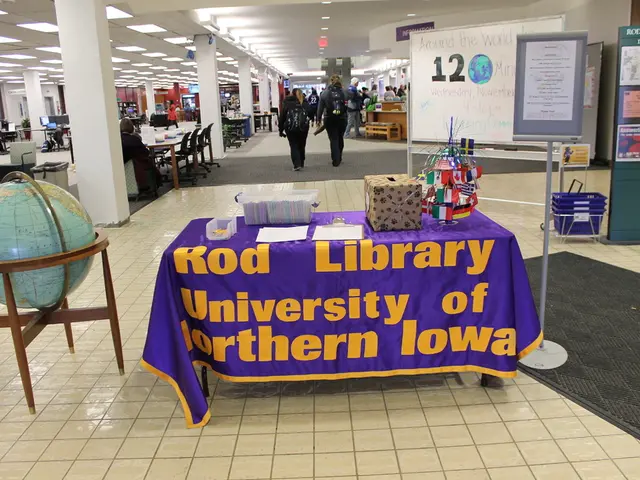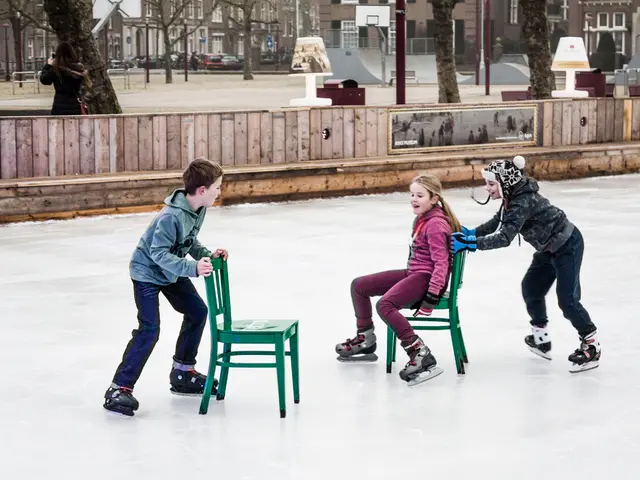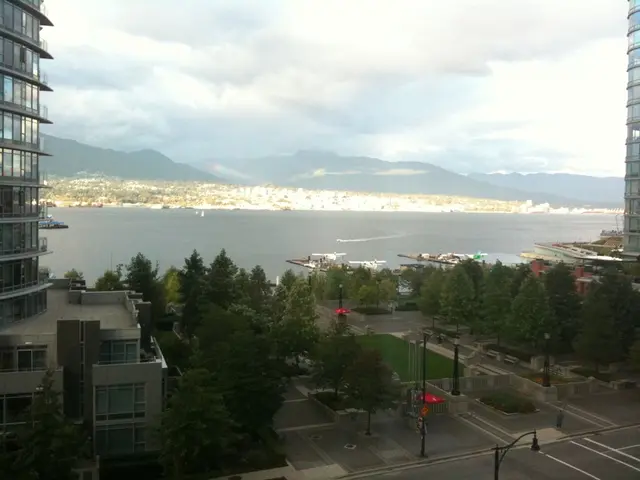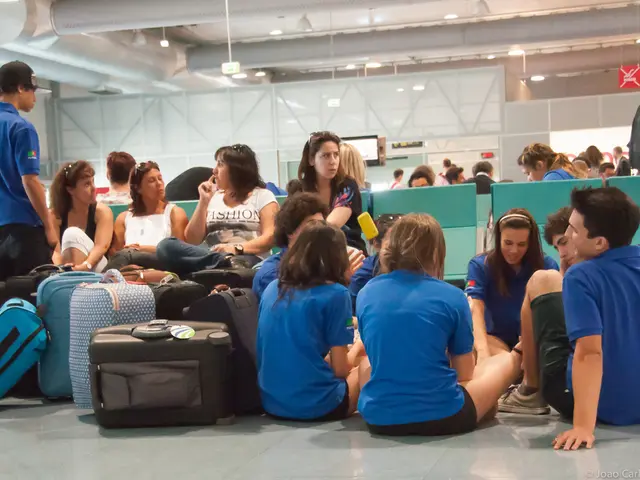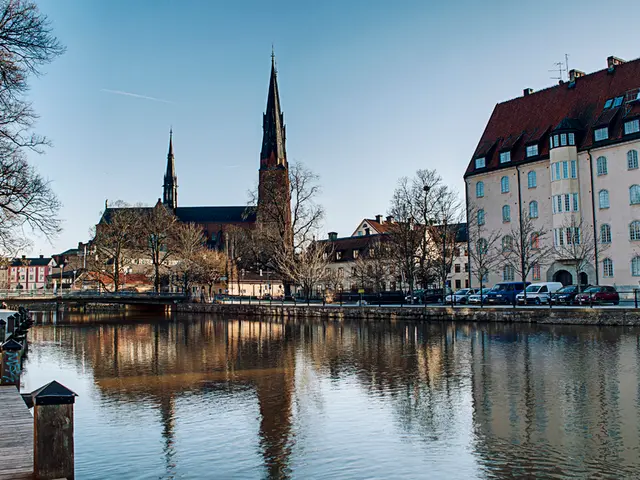Exploring Bahrain's Core: Jewels, Markets, and Ancient Wonders Hidden from Skyscrapers' Shadows
A dazzling feast for the eyes, Bahrain's skyline is a fantastical fusion of architecture and culture. Soaring high into the horizons of Manama's harbor district, structurally daring edifices boast spiraling designs and whirring wind turbines. The majestic Four Seasons Hotel, gracefully shaped like a giant H, pays homage to the ruling King Hamad, while the United Tower, a gleaming gun-metal helix, seems more like a sky twister.
Standing upon a paddleboard in Bahrain Bay, I was simply mesmerized, struggling to maintain my balance as I soaked in the spectacle of these engineering marvels. My eminent guide, Husain Alhabib, shared a captivating tale: "When I was a child, none of these buildings were here," he reminisced. Much like elsewhere in the Arabian Gulf, ultramodern architecture serves as a testament to the wealth amassed through oil and gas resources. Yet, in the shadow of this modern spectacle lies a rich cultural heritage that spans millennia.
"Over the next few days, you'll uncover the true essence of Bahrain," Husain promised.
The Pearl of the Gulf
Bahrain, a tiny nation, consists of 33 islands scattered across a sandy archipelago in the Persian Gulf, occupying just 786 square kilometers. Its capital, Manama, resides on the largest island, Bahrain Island, linked to Saudi Arabia by the King Fahd Causeway. Historically, modern Manama only assumed the role of the capital in 1932, marking the dawn of a new era for this ancient territory.
Crossing a causeway from the neighboring Muharraq Island, we reached the former capital. Stepping into the cobbled streets of old Muharraq, I found myself reveling in the meandering passageways, uncovering historical relics that embodied Bahrain's fable-laden past. The air echoed with the call to prayer, while minarets dotted the skyline, aromatic oils wafted from wooden shops selling brass lanterns, cloth keffiyehs, and pearls.
Ah, pearls! Diving for pearls, and trading them around the globe, have always been a essential part of Bahrain's identity. Following the Bahrain Pearling Path, a waymarked walking trail and tourist project, I weaved through Muharraq Island, passing pearl-shaped lamps leading the way to landmarks such as opulent merchant's homes and humble divers' cottages. Some of these historic structures have been renovated into museums, telling the story of pearling in the pre-oil era.
My journey ended at Bu Maher waterfront, where a visitor center overlooks the tidal shallows, home to the last remnants of the oyster beds where, centuries ago, perfectly shaped and hued specimens were found. The process of pearl formation is fascinating: an irritant, like a grain of sand, nestles in an oyster's shell, prompting the oyster to secrete layers of nacre, resulting in the beautiful pearls sought across the continents.
However, in the 1930s the advent of cultured pearling in Japan dealt a devastating blow to Bahrain's pearl-trading economy. But, just as the discovery of vast petroleum reserves inspired a breathtaking transition to an oil and gas-based economy, cultured pearls became a thing of the past.
Taking me aback, Husain shared, "When oil was discovered in 1932, the decision was made to move the capital and safeguard our heritage and traditions. It was a far-sighted move, as today our economy is shifting once more, this time towards tourism," he explained, emphasizing the island nation's transition to attracting travelers who are eager to delve into the depths of its history and culture.
A rich history
Qal'at al-Bahrain, famously known as the "Portuguese Fort," is an emblem of Bahrain's storied past. While the Portuguese did indeed build the golden-glowing ramparts and turrets during their 16th-century Gulf control, archaeological excavations have revealed layers of ruins that predate their arrival by thousands of years, dating back to the Bronze Age Dilmun civilization.
Driving south through the barren landscape, I could almost trace the passage of ages, as the wind-sculpted dunes held secrets of the millennia-long history of habitation on these islands. To emphasize this kaleidoscope of eras, the giant grandstand of the Bahrain International Circuit loomed on the horizon, where the annual Formula One race is held each April.
"This is a significant event for us," said Hassan, speaking of the annual race. "Bahrain grabs global attention since millions of people around the world tune in. We were the first country in the Middle East to host a Grand Prix," he added. But it seemed to me that Bahrain's true allure lies not solely in the racing spectacle, but more so in the soulful history, culture, and heritage that fuel its growth as a global tourist destination.
Sea, sand, and souks
During my stay, I made the Ritz-Carlton my home-away-from-home, offering five-star accommodations with private marinas and beaches. There are several other such resorts scattered across Bahrain and Muharraq islands, some boasting their own private waterfronts.
Yearning for a more rugged encounter with Bahrain's sea and sand, I boarded a speedboat to explore the Persian Gulf, zipping towards Qatar. In just 45 minutes, we reached a sparkling, miniature island, adorned with a tiny lighthouse. This was Jarada Island, where we dropped anchor just as the tide began to recede, revealing crescents of dazzling white beaches that flourished as the tide retreated.
Climbing down to the shore, I stumbled upon an idyllic barbecue setup under a canvas gazebo, immersing myself in the simplicity of nature as I meandered to the farthest tip of the island, chasing whimbrels and their comical clownfish companions. Afterwards, I snorkeled in the crystal-clear waters of the Persian Gulf, marveling at the vibrant coral reefs.
If the natural, secluded aspects of Bahrain came as a surprise, many more hidden wonders awaited.
Back in the heart of Manama, I discovered, nestled among the freakish modern buildings, an enchanting, authentic old souk. Sat under an awning stretched across an alley for an unforgettable breakfast, I savored dish after simple yet flavorful Bahraini dish—cheese-filled flatbreads, bean stew, chili-topped omelets, sweet noodles, all accompanied by cups of saffron-flavored milk.
Next, I followed the scents of turmeric and sandalwood to Manama's Little India, where Bollywood tunes filled the air as I wandered among gold merchants' shops, sari boutiques, and fairy-lit market stands. Inside the Shri Krishna temple, I paid my respects to marigold-garlanded Hindu gods.
"South Asians have been here for 200 years. They are as much a part of Bahrain as Muslim Arabs," said Husain, insisting on the diverse nature of Bahraini society and enjoyment of festivals like Diwali and Christmas with local Christian friends. Upon his suggestion, we made our way to the nearby St. Mary's Indian Orthodox Cathedral and passed the House of Ten Commandments synagogue, where a small community of Bahraini Jews prays.
Finally, we reached the imposing Al Fateh Grand Mosque, marveling at its architectural grandeur with a central chandelier designed and made in Austria, as our guide Safina explained to us. The smooth, veined marble cooled our feet and the parts of the Sufi calligraphy-inscribed walls, while acres of carpet hailed from Ireland.
"Despite these opulent amenities, I left with the feeling that the mosque is less ostentatious than it might be," I mused as I bid farewell. "Like Bahrain as a whole, it takes a little patience to prise open."
Explore further: Top 10 things to do in Bahrain
- Beyond the ultramodern architecture and engineering marvels, Bahrain's rich cultural heritage can be discovered by following the Bahrain Pearling Path, which unveils historical relics and tells the story of pearling in the pre-oil era.
- Enthusiasts of sports and entertainment can experience the annual Formula One race at the Bahrain International Circuit, while those seeking relaxation can stay at luxurious resorts like the Ritz-Carlton, offering private marinas and beaches.
- In the heart of Manama, an enchanting old souk offers a glimpse into the country's heritage and diverse cultural influences, with a variety of Indian and Middle Eastern shops, restaurants, and religious sites.
